Lexical, referential and syntactic ambiguities as Internet jokes
This study investigated how Internet users construct a sense of ambiguity in the English language to make funny jokes through Internet memes. Its aim was to examine the ambiguity types which stimulated humor in internet jokes. The jokes investigated were images presented with puns that were shared in public through an online platform called 9GAG. The research method applied was the qualitative method. The data, consisting of 50 jokes, were selected from the online 9GAG platform and listed by their categories. The researchers analyzed the categorized jokes using an observation table and drew up the formula of each sentence based on the categories identified. The categorization of ambiguities in this research was decided based on the semantic theory of ambiguity, which consisted of lexical, referential and syntactic ambiguities. The results showed that lexical ambiguity dominated the popularity of language construction used as ambiguous jokes, numbering 29 jokes (56%). It is followed by 14 (30%) syntactic ambiguities and seven (14%) referential ambiguities. The results revealed that lexical ambiguities involving the literal and figurative meanings of homonyms were frequently used to make jokes in the Internet memes. Such ambiguities could produce a humorous effect and cause some confusion about the language used. However, the study had limitations, one of which was the limited use of samples. Future research into lexical ambiguities should considerably increase the number of samples.
Figures


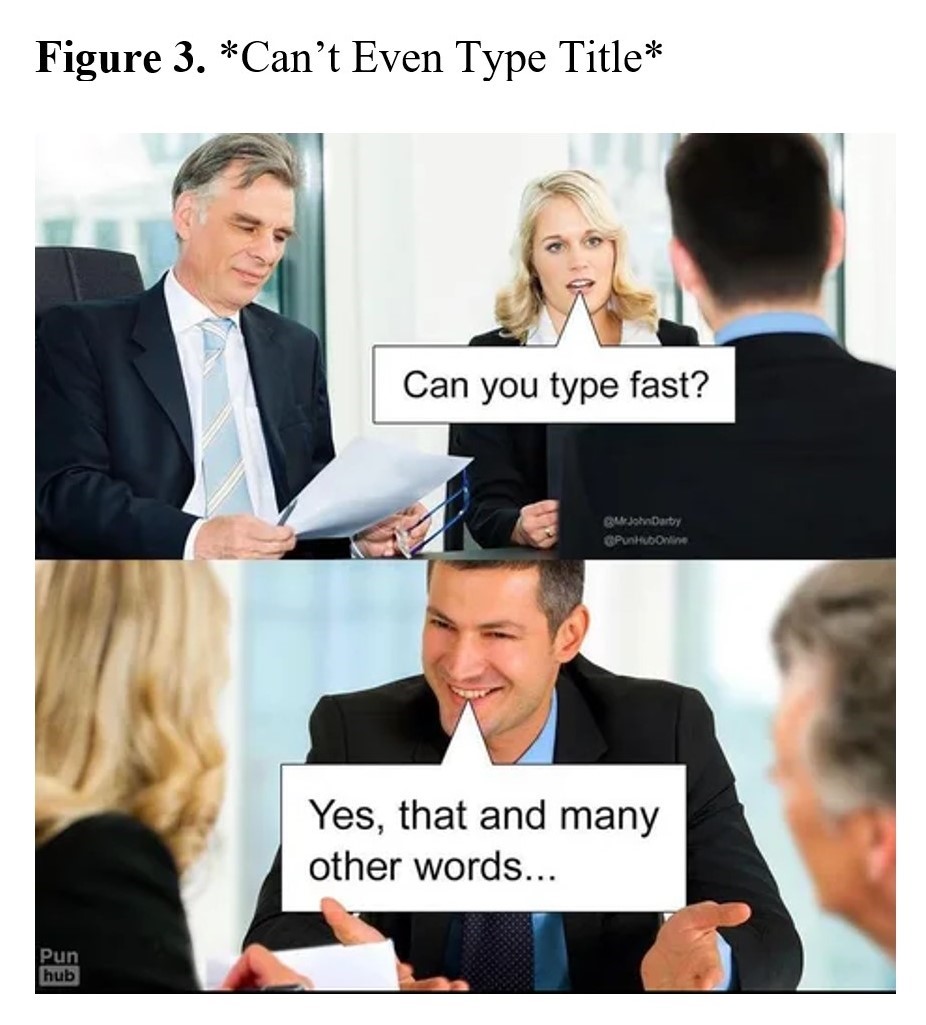
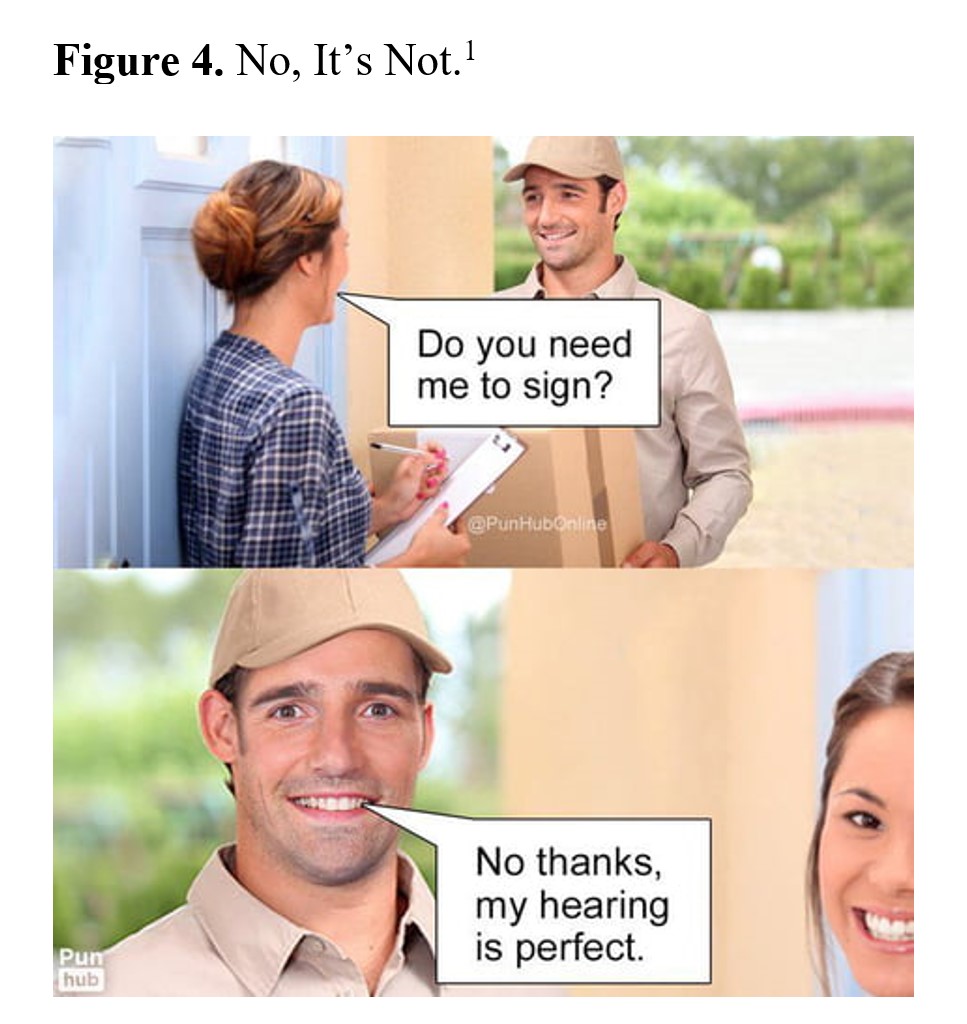


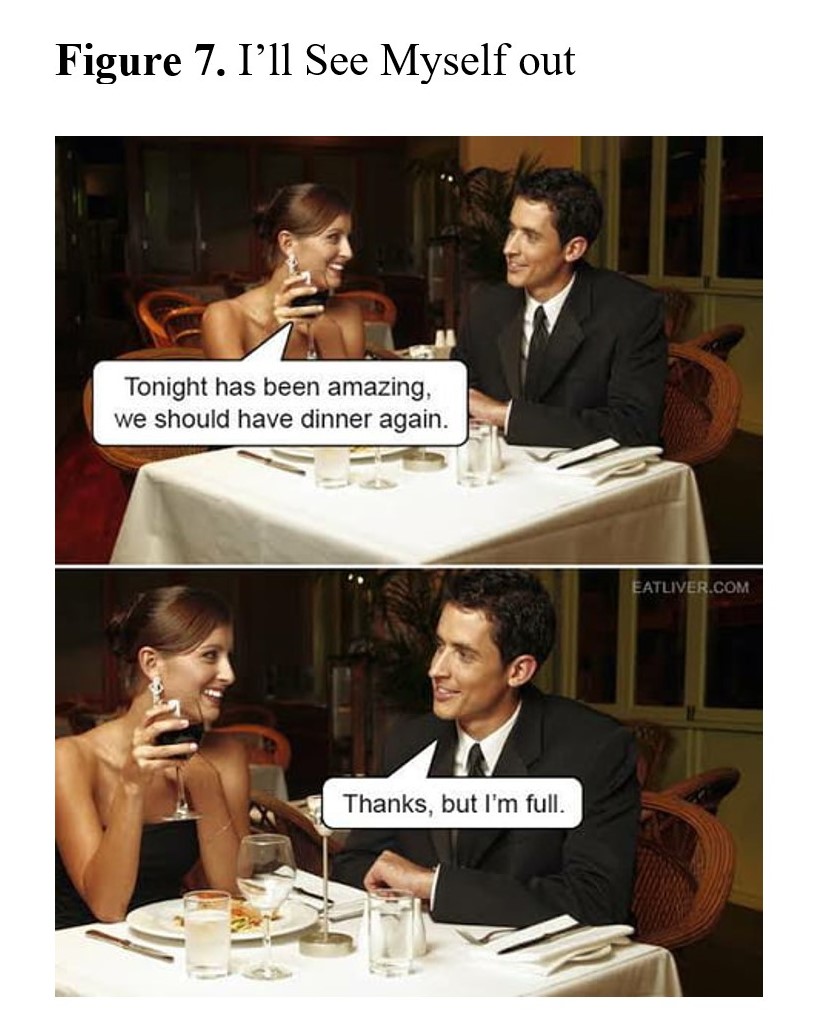

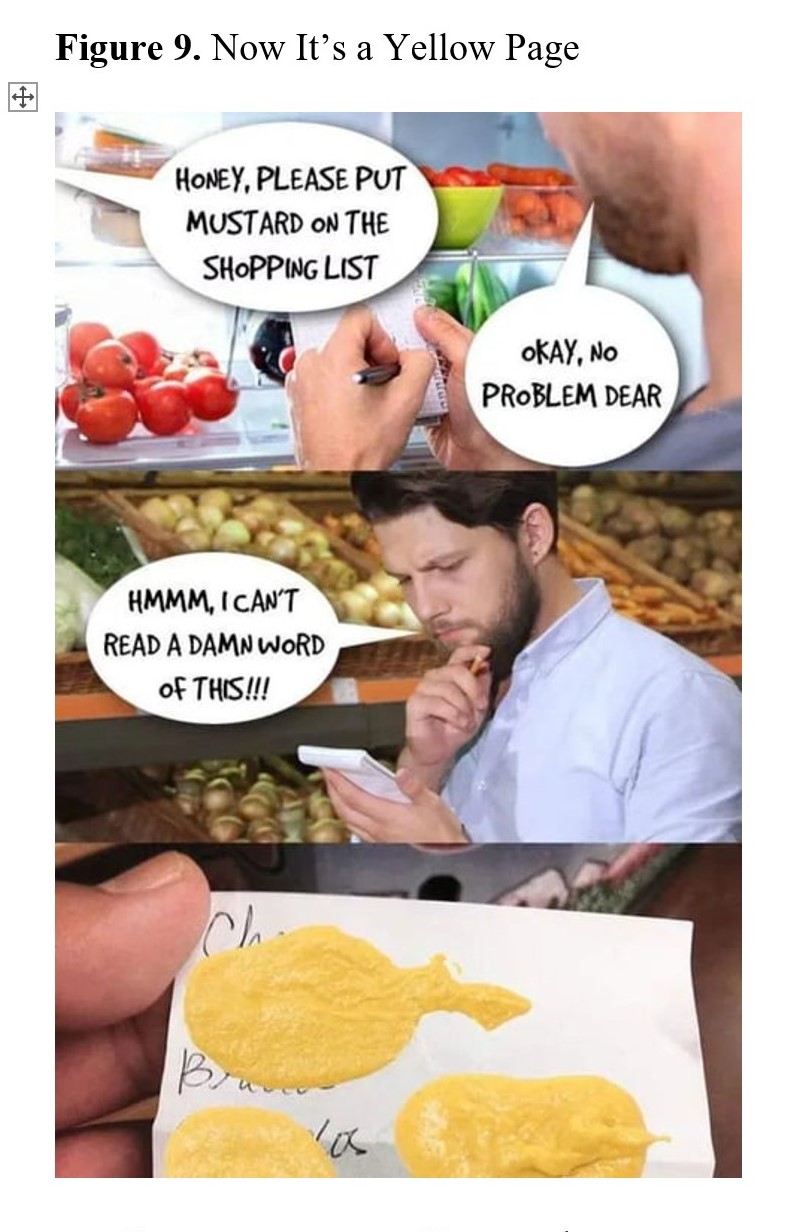
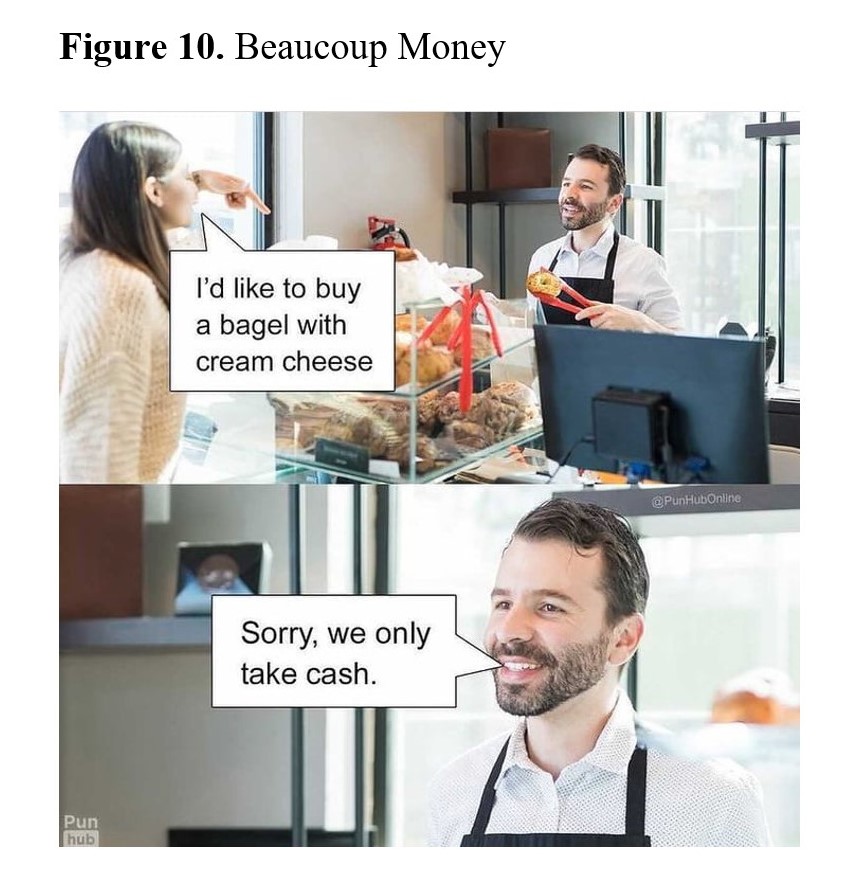
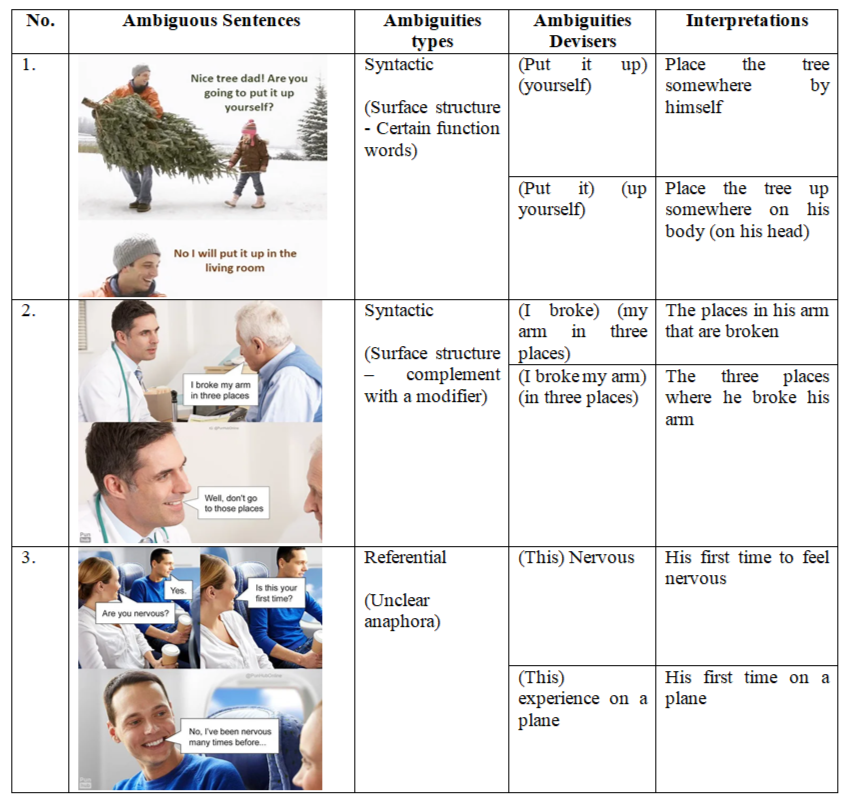
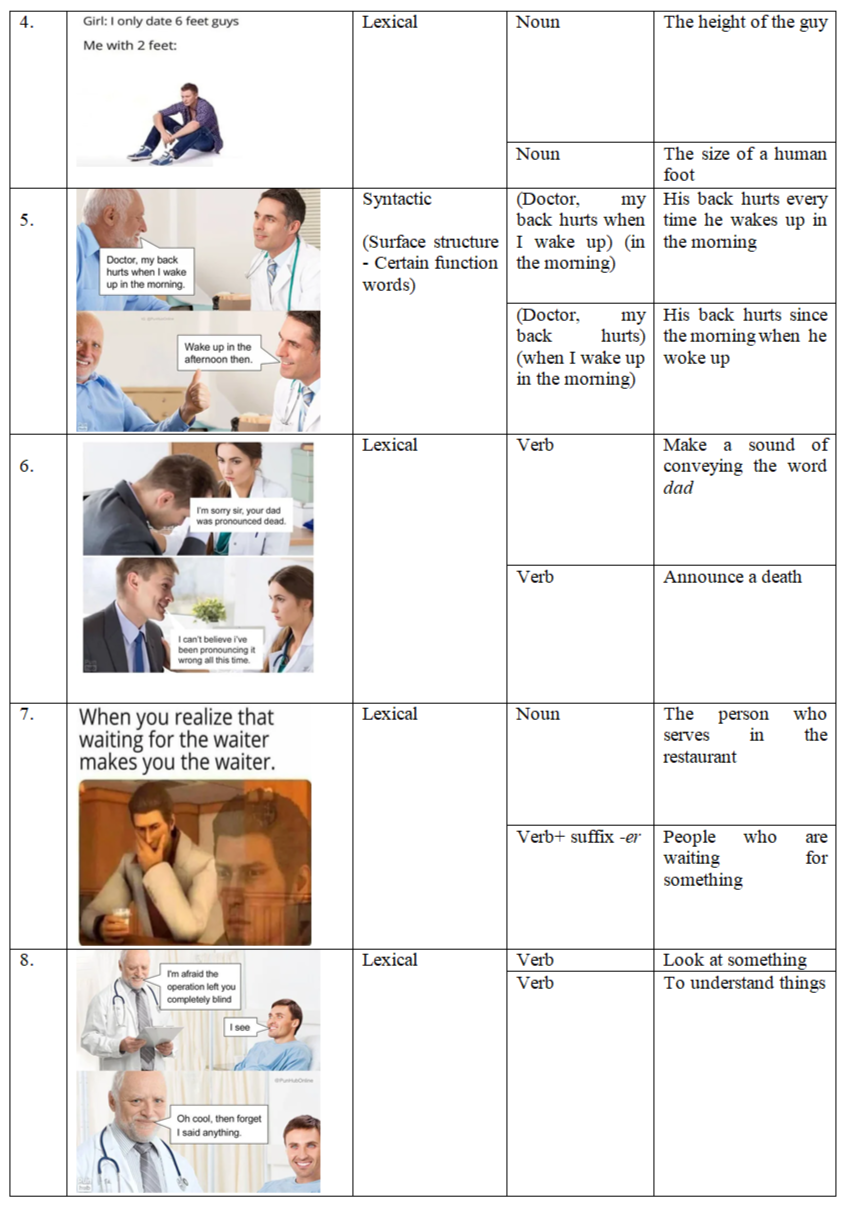
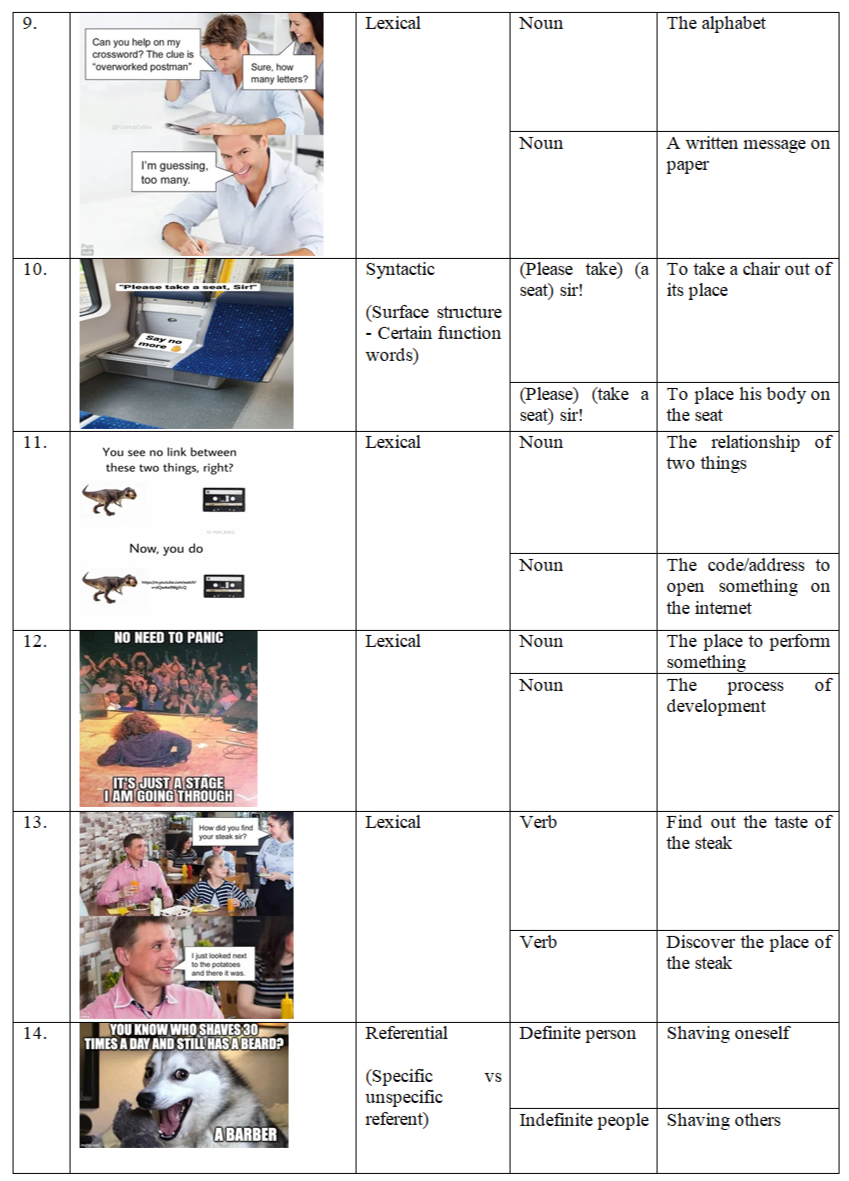

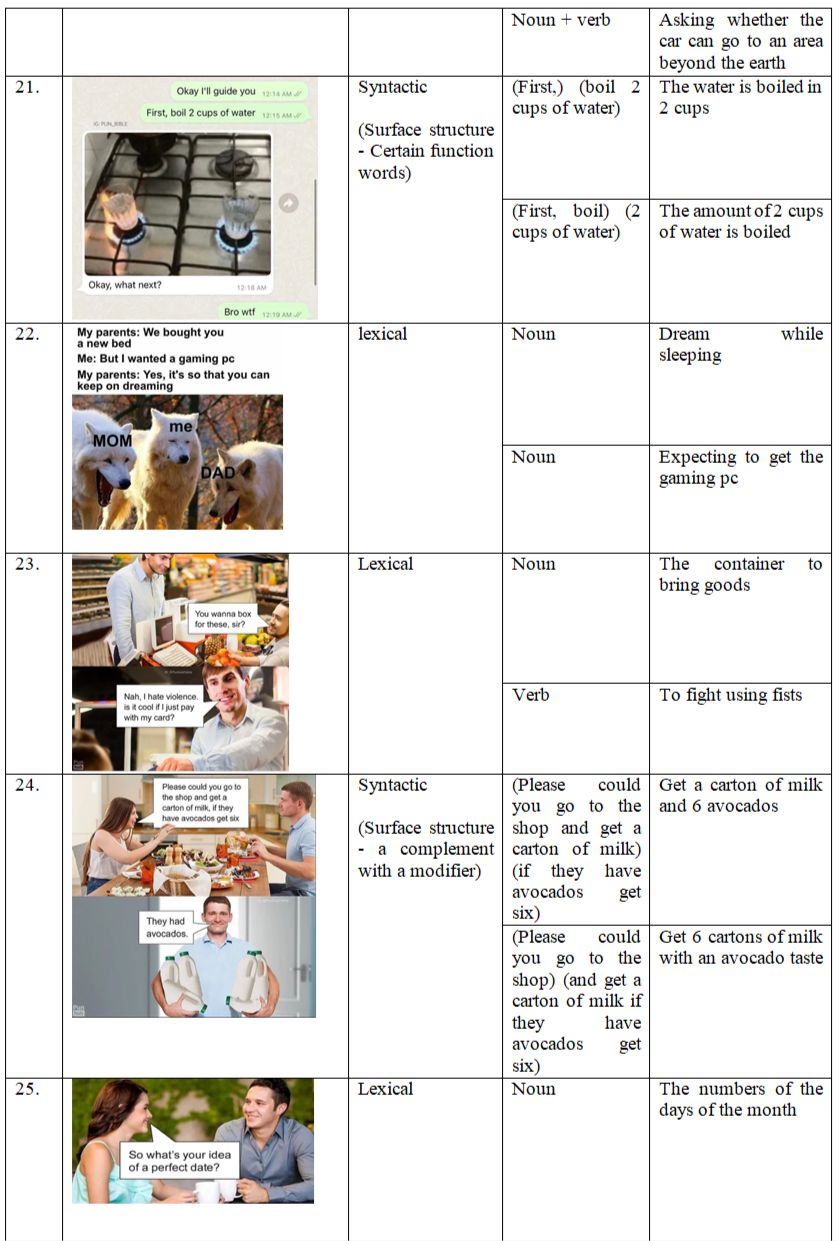
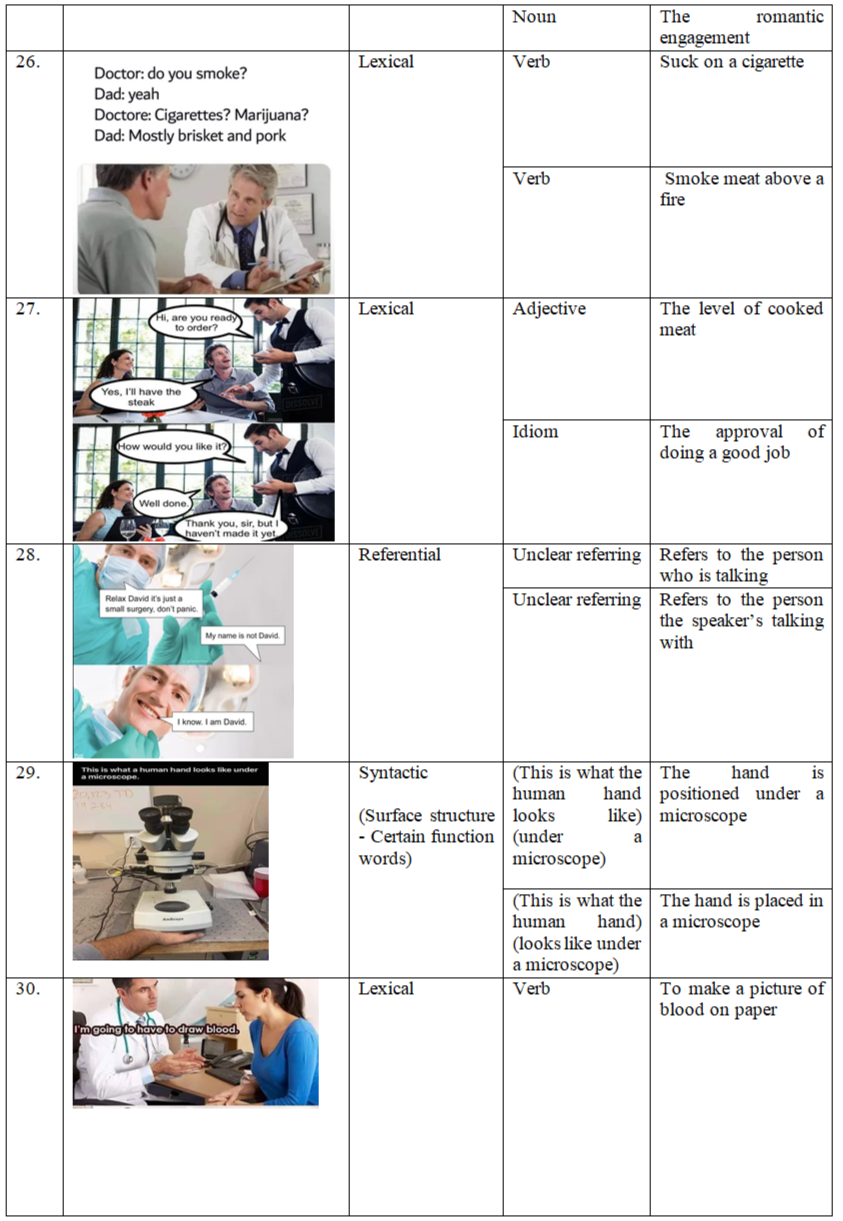
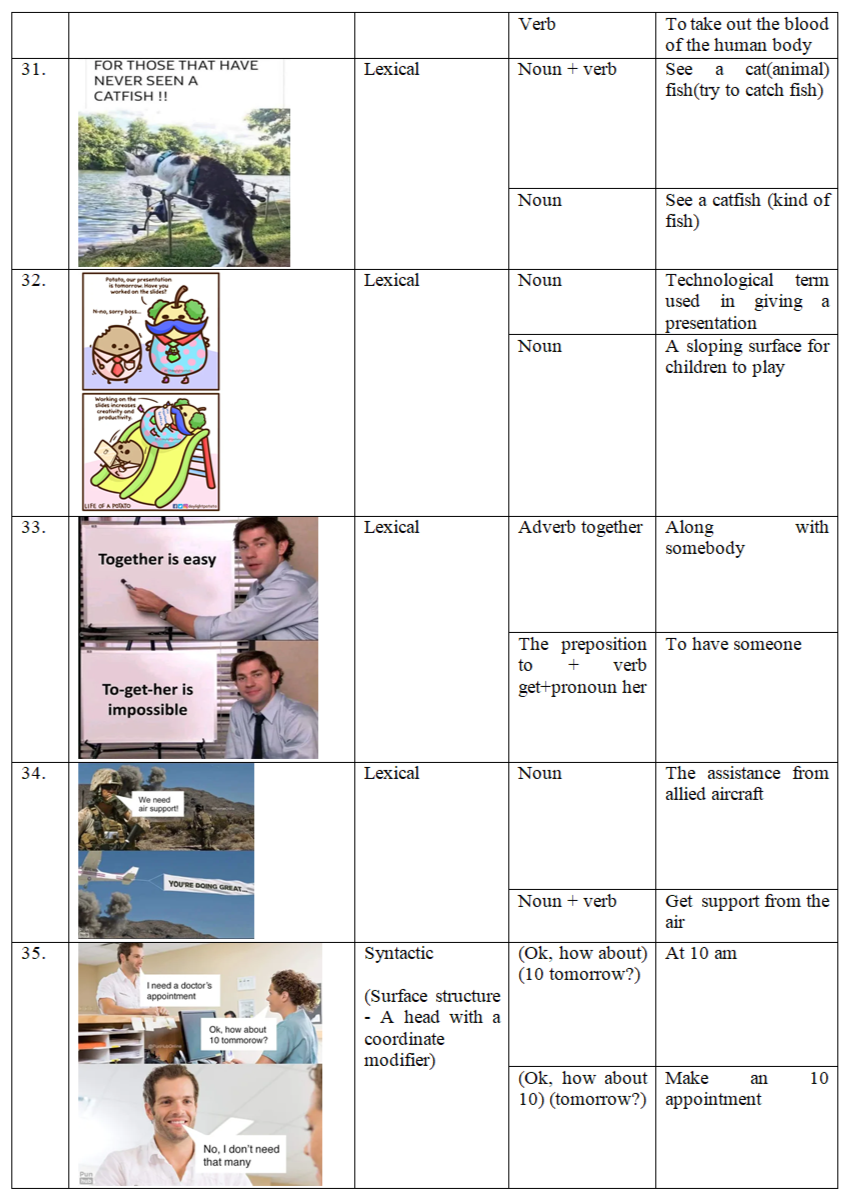


Yolanda, N. A. Y. Y., Bram, B., Ardi, P. and Doborovich, A. N. (2023). Lexical, referential and syntactic ambiguities as Internet jokes, Research Result. Theoretical and Applied Linguistics, 9 (2), 129-155. DOI: 10.18413/2313-8912-2023-9-2-0-7


















While nobody left any comments to this publication.
You can be first.
Ahrens, B. (2018). Normative power Europe in crisis? Understanding the productive role of ambiguity for the EU’s transformative agenda, Asia Europe Journal, 16 (2), 199-212. https://doi.org/10.1007/s10308-018-0507-8(In English)
Ardi, P. and Rianita, E. (2022). Leveraging gamification into EFL grammar class to boost student engagement, Teaching English with Technology, 22 (2), 90-114. (In English)
Attardo, S. (2018). Universals in puns and humorous wordplay, in Winter-Froemel, E. and Thaler, V. (eds.), Cultures and Traditions of Wordplay and Wordplay Research, Walter de Gruyter, Berlin, 89-110. (In English)
Aulia, H. R. (2017). Scope ambiguity in the Jakarta Post headline articles published in May 2015, LLT Journal: A Journal on Language and Language Teaching, 20 (2), 94-101. https://doi.org/10.24071/llt.v20i2.736(In English)
Belfahri, K. (2021). Rethinking language ambiguity beyond the semantic-pragmatic interface, Folia Linguistica et Litteraria, 34, 211-233. https://doi.org/10.31902/fll.34.2021.12(In English)
Bobchynets, L. (2022). Lexico-semantic means of pun creation in Spanish jokes about La Gomera by Caco Santacruz, The European Journal of Humour Research, 10 (1), 22–28. https://doi.org/10.7592/EJHR.2022.10.1.638(In English)
Bulut, T. and Almabrouk, N. (2020). The functions of puns in “Alice’s Adventures in Wonderland”, The Reading Matrix: An International Online Journal, 20 (1), 72-185. (In English)
Cahyani, D. A. and Islam, A. F. (2020). The ambiguity of English advertisement, Jo-ELT (Journal of English Language Teaching), 4 (1), 49-62. https://doi.org/10.33394/jo-elt.v4i1.2436(In English)
Cevoli, B., Watkins, C., Gao, Y. and Rastle, K. (2022). Shades of meaning: Natural language models offer insights and challenges to psychological understanding of lexical ambiguity, PsyArXiv. https://doi.org/10.31234/osf.io/z8rmp(In English)
Çopur, N. and Atar, C. (2022). Studying humour from a conversation analytic perspective, Studies in Linguistics, Culture, and FLT, 10 (3), 82-93. https://doi.org/10.46687/LGNS4656 (In English)
Dewi, S. P. (2021). Ambiguity in the laugh aa day, book of bloopers, quotes and good clean jokes by Jim Kraus, Lingtersa (Linguistik, Terjemahan, Sastra), 1 (1), 30-42. https://doi.org/10.32734/lingtersa.v1i1.5703(In English)
Diao, Y., Lin, H., Yang, L., Fan, X., Wu, D., Zhang, D. and Xu, K. (2019). Heterographic pun recognition via pronunciation and spelling understanding gated attention network, WWW’19:The World Wide Web Conference, New York, USA, 363-371. https://doi.org/10.1145/3308558.3313505(In English)
Fera, A. (2019). Lexical ambiguity compared to syntactic/or structural ambiguity, Knowledge – International Journal, 30 (5), 1113–1116. https://doi.org/10.35120/kij30051113f(In English)
Hariyatmi, S. (2023). When the wall speaks: Social semiotics analysis of (Covid-19)-themed murals in Indonesia, LLT Journal: A Journal on Language and Language Teaching, 26 (1), 228-243. https://doi.org/10.24071/llt.v26i1.5783(In English)
Iivari, N., Kinnula, M., Kuure, L. and Keisanen, T. (2020). "Arseing around was fun!"–Humor as a resource in design and making, Proceedings of the 2020 CHI Conference on Human Factors in Computing Systems, Honolulu, USA, 1-13. https://doi.org/10.1145/3313831.3376169 (In English)
Iswandari, Y. A. and Ardi, P. (2022). Intercultural communicative competence in EFL setting: A systematic review, rEFLections, 29 (2), 361-380, available at: https://so05.tci-thaijo.org/index.php/reflections/article/view/260249 (Accessed: 15 June 2023). (In English)
Jaroenkitboworn, K. (2020). Funny English in digital world, LEARN Journal, 13 (1), 39-61, available at: https://so04.tci-thaijo.org/index.php/LEARN/article/view/237824 (Accessed: 29 May 2023). (In English)
Juliana, J., Nadirah, N., Lababa, L. and Manda, I. (2022). Investigating lexical and syntactic ambiguity on native Facebook celebritism, La Ogi: English Language Journal, 8 (1), 40-47. (In English)
Kirner-Ludwig, M. (2018). Trying to make it fit…That’s what she said: An argument for a new category on the formulaic continuum, Journal of Pragmatics, 137, 76–91. https://doi.org/10.1016/j.pragma.2018.08.001(In English)
Kreidler, C. W. (2002). Introducing English semantics, Taylor and Francis e-Library, London, UK. (In English)
Kryva, Y. (2021). Pun as a linguostylistic means of creating the humorous effect in English jokes, Mahistersʹkyy Naukovyy Visnyk, 36, 66-68. (In English)
Lord, K. and Brown-Schmidt, S. (2022). Temporary ambiguity and memory for the context of spoken language, Psychonomic Bulletin & Review, 29, 1440–1450. https://doi.org/10.3758/s13423-022-02088-y(In English)
Ma’yuuf, H. H. and Nashaat, O. O. (2021). A semantic-syntactic study of ambiguity in humorous contexts, Ilkogretim Online – Elementary Education Online, 20 (5), 574-580. https://doi.org/10.17051/ilkonline.2021.05.61(In English)
Nassaji, H. (2020). Good qualitative research, Language Teaching Research, 24 (4), 427-431. https://doi.org/10.1177/1362168820941288(In English)
Okunade, G. A. (2021). A multimodal discourse study and discursive functions of Nigerian societal humour on social media, Dutsinma Journal of English and Literature, 4 (1), 262-287. (In English)
Powell, J. L., Furlong, J., Bézenac, C. E. D., O’Sullivan, N. and Corcoran, R. (2019). The pragmatics of pragmatic language and the curse of ambiguity: An FMRI study, Neuroscience, 418, 96-109. https://doi.org/10.1016/j.neuroscience.2019.08.039(In English)
Saputri, N. K. D. T. D., Suastra, I. M., and Putra, I. K. S. (2022). The lexical ambiguity in news headlines of the Jakarta Post, Humanis, 26 (1), 26-33. https://doi.org/10.24843/JH.2022.v26.i01.p04(In English)
Seredina, E. V. and Dekhnich, O. V. (2022). Trump’s image in a political cartoon: Analysis of expressive potential, Research Result. Theoretical and Applied Linguistics, 8 (2), 96-107. https://doi.org/10.18413/2313-8912-2022-8-2-0-7(In English)
Taghiyev, I. A. (2020). Communication-cognition ‘butterfly’(geometrical model of verbal communication in case of ambiguity), International Journal of Language and Linguistics, 7 (2), 121-128. https://doi.org/10.30845/ijll.v7n2p14(In English)
Tang, L. (2022). Ambiguity advantage under meaning activation, Journal of Logic, Language and Information, 31, 99-112. https://doi.org/10.1007/s10849-021-09349-4(In English)
Zhang, Y., Chen, S., Li, S., Zhao, Q., Zhou, Z., Huang, F. and Wang, F. (2019). The use of internet language enhances creative performance, The Journal of General Psychology, 148 (1), 26–44. https://doi.org/10.1080/00221309.2019.1703628(In English)
The authors are grateful to the editorial team and reviewers of Research Result. Theoretical and Applied Linguistics. The third author would like to express his gratitude to Lembaga Pengelola Dana Pendidikan (Indonesia Endowment Fund for Education) for awarding a scholarship to pursue a doctorate degree in English Language Education at Universitas Negeri Malang, Indonesia.